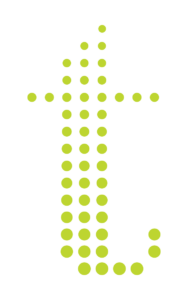We agree: opinions are easy. Several claims are made in our article regarding the role of the brain in Talentism’s concepts of the Learning Cycle and Speed of Change. Most those claims are encapsulated in the following passage:
Your brain can take in a lot of information. But it can only work with a small fraction of that information. And to make matters worse, you aren’t really in control of what information gets accepted and rejected.
No one would deny that the way your brain works will have a notable effect on the ideas introduced in the article. But does it really work in the way that Talentism claims? Based on the best evidence available, we are largely in agreement with their claims.
Your sensory organs are capable of taking in a tremendous amount of information. Expressing the amount of information your body is receiving is a complicated task, since sensory information is not transmitted in the same way as digital information. Nevertheless, the best estimate is that the visual system alone processes about 100 bits/sec, which is only one of your senses—and it turns out you have more than five senses for your brain deal with.
Despite this amazing capacity for information intake, your brain is actively using only a fraction of that capacity at any given time. You may notice that although you are experiencing sights, sounds and tactile sensations at all times, you can only focus on a few things at a time. For instance, it is unlikely you were considering how your shirt feels against your skin until this sentence brought your attention to focus on it; and upon focusing on your shirt, you likely stopped paying attention to one of several other things you previously had been focused on. This is based off of the capacity limits of part of what is commonly called your short-term memory, known to psychologists and neuroscientists as your working memory. This is the system that stores information you can use in your moment-to-moment mental processing. In 1956, George Miller published the highly influential article “The Magical Number Seven, Plus or Minus Two”, which posited that the information being processed in your working memory is based on “chunks” rather than bits. Most people are only able to hold seven of these chunks in working memory at any given time. Decades of research have refined this somewhat: the number of objects you hold in working memory, it turns out, has largely to do with the nature of those objects (e.g., numbers vs. words vs. abstractions), but the number of things you can juggle at any one time does not ever greatly exceed Miller’s magical number.
But if we’re only using a few chunks of information in our working memory, what happens to the hundreds of other bits we receive every moment? It turns out it is filtered out by a system known as pre-attentive processing—and as “The Learning Leader” states, the active control you have over this is marginal, making it highly possible that you can miss important information that’s right in front of your nose. Luckily for us, though some aspects of it remain outside of our conscious control, our pre-attentive processing will adjust based on the goals we have defined, suggesting that clarity in goal-directed behavior is the best defense against missing important information.
Score one for Talentism. We’ll see how they fare in the future.


